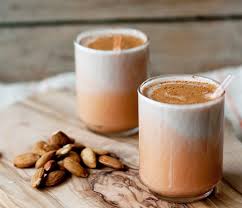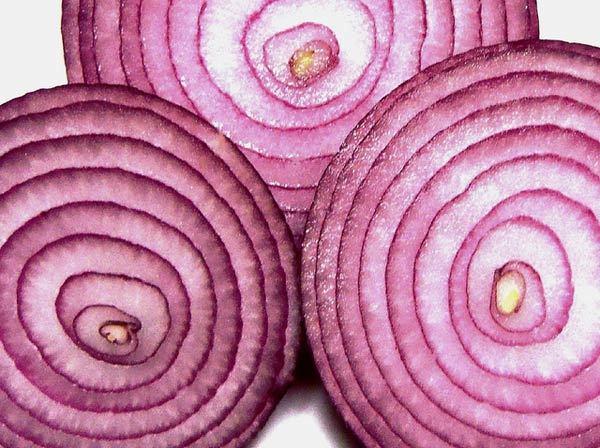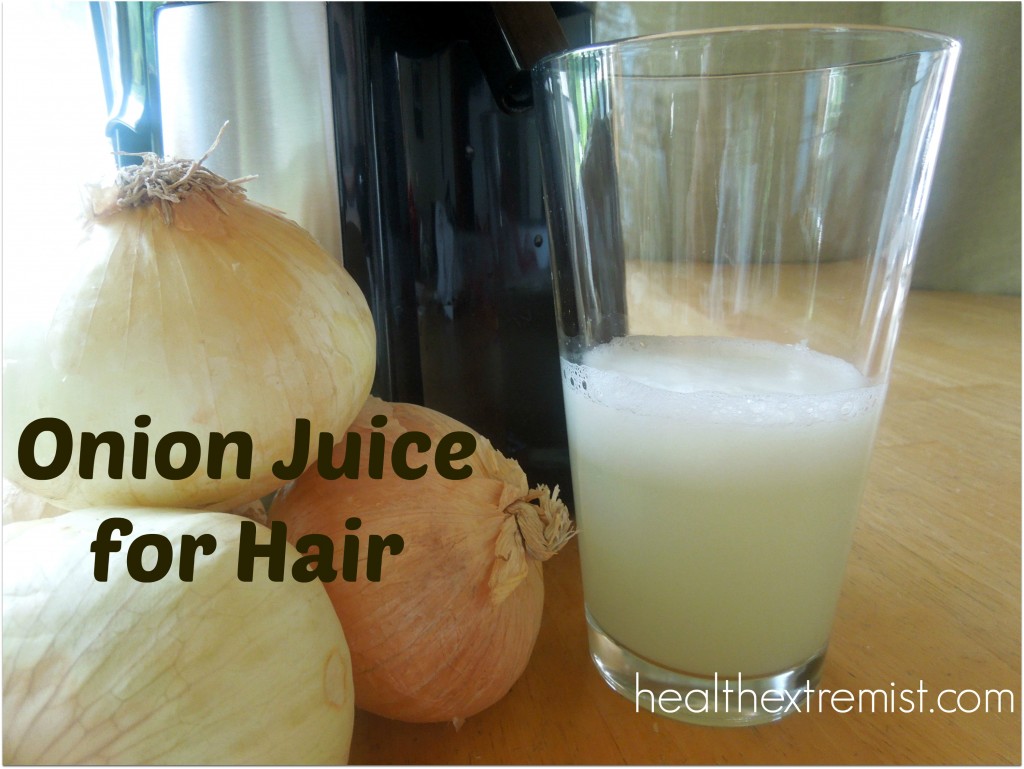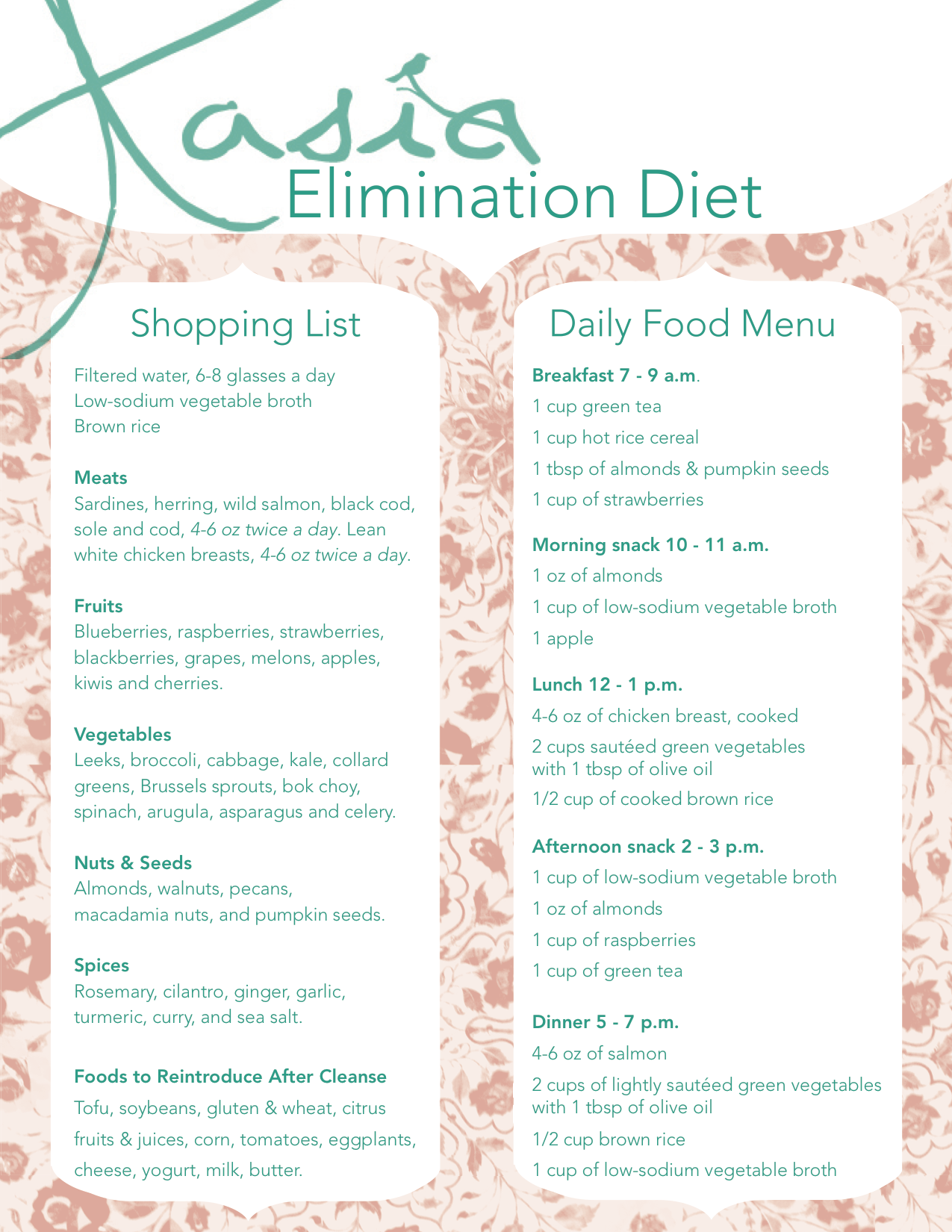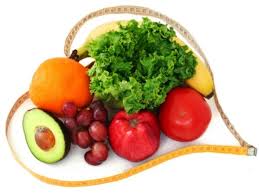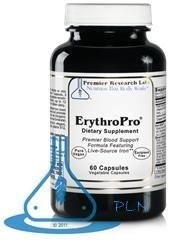The following is a topic very important to me - and I am passionate to share with you- Informed Beauty.... it's a long one, but worth it!
As a "hair and skin expert," I look at my clients as a whole person from their hair style or hair color that is desired, to what may be some of the underlying reasons there are external challenges such as acne or hair loss. We work with our guest's "comprehensive beauty," including overall nutritional, emotional, physical, and hormonal health and how it effects the hair and skin.
When I first started on the "organic beauty" path I spent multiple weekends with well respected functional medicine expert Dr. Bob Rakowski. He would state that just living on earth we are at risk for toxic estrogen exposure and are swimming in a sea of estrogens. I couldnt help but connect the dots back to the beauty industry - filled with chemicals.
Fact: 30 percent of the cancers that affect the sex organs (breast, prostate, ovarian), but the cause of the remaining 70 percent is likely due to chemical estrogen exposure and problems with metabolism due to diet and a sedentary lifestyle. The solution is to live a lifestyle that both detoxifies and minimizes exposure to chemical estrogens.

Estrogen Dominance – Symptoms, Causes, and What to do About It
Estrogen dominance is becoming one of the more common hormone imbalances today among both men and women. Estrogen dominance occurs when the ratio of estrogen to progesterone sways too much one way or another.
Estrogen dominance can often times be easily identified.
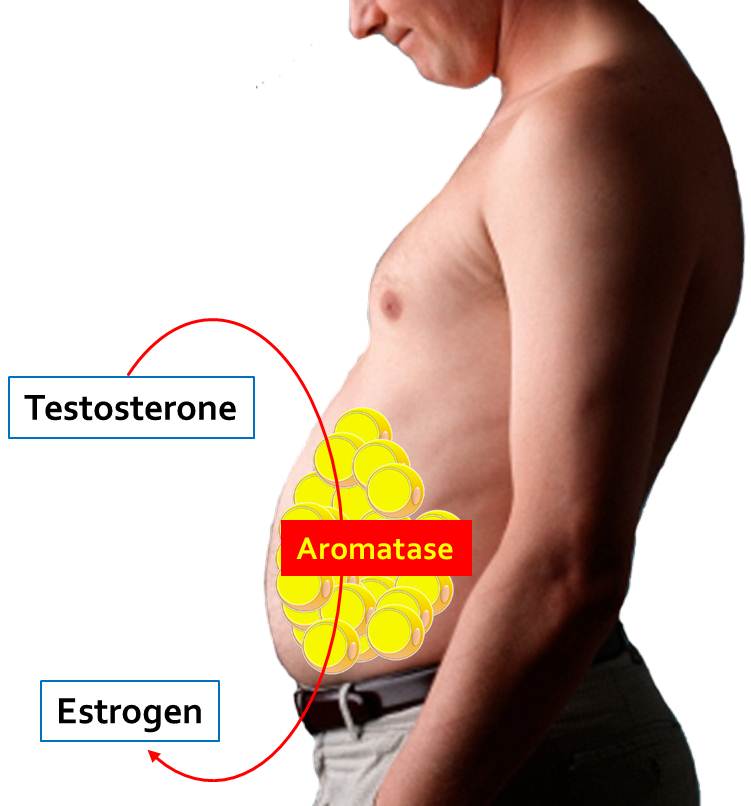 -Women have a disproportionate amount of fat storage on the lower body and around the waist line.
-Men with high estrogen store fat around the breasts, back of their arms and legs.
-Children also have high levels of exposure to chemical estrogens.
-Women have a disproportionate amount of fat storage on the lower body and around the waist line.
-Men with high estrogen store fat around the breasts, back of their arms and legs.
-Children also have high levels of exposure to chemical estrogens.
Chemical, and/or xeno-estrogens are un-avoidalbe. There are some 70,000 registered chemicals having hormonal effects, in addition to being carcinogenic. The synergistic effects of exposure are well documented, but largely unknown. These substances can increase the estrogen load in the body over time and are difficult to detoxify through the liver.
This article is a guest post by Charles Poliquin - telling you why and how you can change your lifestyle in the following ten ways for estrogen health:
1) Improve Gastrointestinal Health
2) Improve Diet
3) Decrease Body Fat
4) Use Phytoestrogens To ImproveEstrogen Detoxification
5) Stop Testosterone From Turning into Estrogen
6) Improve Estrogen Metabolism
7) Ensure Complete Elimination
8) Supplement With Essential Nutrients
9) Watch What You Drink
10) Limit Chemical Estrogen Exposure
Estrogen: The Basics
Estrogen is a hormone that is produced primarily in the ovaries in women and in the testes in men. For men, it plays an important role in sperm production and bone maintenance. Estrogen is also produced by other tissues in both men and women, including fat and the brain.The amount of estrogen needed by men to support these functions is very small, and men tend to have excess estrogen in their systems for two reasons.
First, an enzyme called aromatase that is found in tissues throughout the body will turn testosterone into estrogen. Aromatase is found in body fat meaning that men with more fat will produce more aromatase and therefore have higher estrogen levels and lower testosterone. The good news is you can block aromatase by eating or supplementing with nutrients that do this naturally. There are also drugs that inhibit aromatase that are used to prevent breast and prostate cancer, but it’s best to take the natural route without consuming synthetic drugs.
Secondly, men have excess estrogen because of the chemical estrogens in the environment, such as BPA and phthalates. BPA is a petroleum based chemical that mimics estrogen i
n the body and studies have shown that it affects endocrine response in the body in humans and animals.
How Estrogen Is Detoxified By The Liver
Estrogen is metabolized by the liver. The liver converts excess estrogens into compounds that can be excreted by the body. The catch is there are three pathways through which estrogen can be metabolized. One is a “toxic” pathway that is linked to cancer development, the second is unfavorable for health, and the third is more benign and preferable.If your body can convert estrogens along what is called the 2-hydroxy pathway it will be healthier
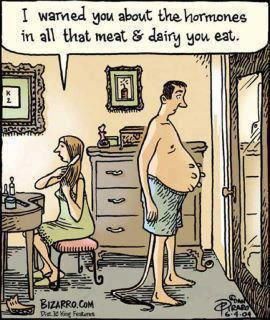
and you’ll decrease your cancer risk, whereas if your body converts along the 16-alpha-hydroxy pathway it will be at greater risk of cancer. Just remember that the C-2 pathway is healthier and the C-16 pathway is toxic. The other unfavorable pathway is the C-4 pathway, which should also be avoided. The solution is to nutritionally support conversion of estrogen along the C-2 pathway, which can be initiated by ensuring you have a healthy gut.
1) Improve Gastrointestinal Health
Poor gastrointestinal health can inhibit excretion of unwanted estrogen from the
body and promote its reabsorption. A healthy gut with dietary fiber in the form lignan, such as flaxseeds, can bind to estrogen in the digestive tract so that it will be excreted from the body. When the estrogen breaks free in the large intestine, it re-enters circulation and is not removed from the body. This is a bad situation.
The solution is to eat adequate fiber (broccoli is great for this) and include lignans in the diet, including flax, cruciferous veggies, and leafy greens. A probiotic is essential because it will increase the “good bacteria” in the gut and support neurotransmitter function.
2) Improve Diet With Low Carb, High-Protein, Omega-3 Fats

A diet that is low in simple carbs and high in vegetable carb sources will help you detoxify estrogens and provide adequate fiber. To avoid excess estrogen, you need to manage insulin because it doing so is better for body composition, and persistently high insulin produces a poor endocrine profile that can inhibit estrogen detoxification.
Getting your carbs from vegetable and fruit sources will provide the lignans and fiber needed for gut health and increase antioxidant levels, which can abolish free radicals that produced by estrogen that goes down the C-16 pathway. Omega-3 fats, which are found in fish, have been shown to promote the C-2 pathway over the 16 pathway, particularly EPA omega-3 fatty acids. On the flip side, diets low in omega-3s have resulted in estrogen being metabolized primarily through the C-16 pathway. I’ve written a lot about omega-3s so I won’t go into detail here, but supplementation with a high concentration of EPA and DHA fish oil daily is recommended for estrogen metabolism.
A high protein diet will produce a better body composition for most people. Plus, low protein diets have been shown to decrease activity of something called cytochrome P450 that detoxifies estrogen. The amino acids lysine and threonine have been shown to support liver function and since estrogen is metabolized by the liver, it is thought that these proteins can help get rid of estrogen from the body. Lysine and threonine are found in meat, fish, beans, eggs, and some seeds (sesame, fenugreek). Sesame seeds also provide fiber and fenugreek helps lower the insulin response to carbs, making both good additions to your diet.
3) Decrease Body Fat
The more fat you have, the more estrogen you’ll have because fat tissue increases levels of the aromatase enzyme that turns testosterone to estrogen. Decreasing body fat and building lean mass are key to cancer prevention and estrogen detox.
4) Use Phytoestrogens To Promote the C-2 Pathway
Include foods with phytoestrogens in your diet because they will take natural and chemical estrogens out of play in the body. Phytoestrogens are plant-based compounds that can bind to
estrogen receptors, but they have about 1/1000th of the effect on the body as real or chemical estrogen. When phytoestrogens bind to estrogen receptors they basically take up the parking sport of the true estrogen, and keep it from exerting its effect.
Lignans and isoflavones are the main phytoestrogens, and in addition to binding with estrogen receptors, they can increase SHBG levels (protects the body by binding to estrogen), decrease aromatase (prevents testosterone turning into estrogen), and shift metabolism of estrogen away from the C-16 pathway to the C-2 pathway (the safer pathway).
The best phytoestrogens to include in the diet are flax, sesame, leafy greens, kudzu, alfalfa, clover, licorice root, and legumes. Greens, flax, and sesame can be easily added to the diet, and the others can be supplemented to support estrogen detoxification.
5) Block Aromatase and Stop Testosterone From Turning into Estrogen
Blocking aromatase is key for getting rid of estrogen because it plays the main role in producing estrogen in men. If aromatase is present, there are two chances for estrogen to be produced in the body. First, the hormone androstenedione will be turned into testosterone unless aromatase is present in which case it will be turned into estrogen. Then, aromatase will turn testosterone into estrogen as well.
Nutrients that have a proven effect on aromatase include selenium, melatonin, zinc, green tea, and citrus flavonones—substances found in orange and grapefruit rinds along with tomato skins. You can include these in your diet and take a supplement for best results.
We know aromatase inhibitors work because there are numerous studies demonstrating their influence, and one of the most illuminating is a review that found that men who took a combination of zinc, folic acid, acetyl-l-carnitine, and had adequate omega-3s improved fertility and sexual health. Flax and lignans were also part of the diet. This study tells us that estrogen detox is not a simple endeavor. Rather, it’s a lifestyle that includes the ideal diet with additional nutrient supplementation to inhibit aromatase, boost SHBG, and reduce the ratio of estrogen that goes down the C-16 pathway in favor of the C-2 pathway.
6) Improve Estrogen Metabolism By Promoting the C-2 Pathway
Promoting the C-2 pathway of estrogen metabolism is probably the most important thing you can do to prevent cancer. The first step of estrogen elimination is for enzymes to initiate metabolism by joining the estrogen molecule. This will happen at either the 2-carbon position or the 16-carbon position of the molecule, which determines the pathway the estrogen will head down.
The C-2 pathway produces very weak estrogenic activity and is termed “good” estrogen. In contrast, the C-16 pathway produces robust estrogenic activity and promotes tissue damage that leads to cancer. There’s also a C-4 pathway, that is not good, but its role is small and for simplicity sake you only need to know that you want to avoid it as well.
In one large scale study of premenopausal women, those who metabolized estrogen predominantly via the C-2 pathway were 40 percent less likely to develop breast cancer during the five-year study.
Key nutrients for supporting the C-2 pathway are EPA fish oils, phytoestrogens, and of special importance, B vitamins and a substance called DIM. The B vitamins, particularly B6, B12, and folic acid promote the C-2 pathway. B6 is also known to decrease gene activity once estrogen is bound to a receptor, meaning this vitamin can inhibit cell damage and cancer development.
DIM is a compound found in cruciferous vegetables such as broccoli and cauliflower. It is often taken in supplement form because you would need to eat large quantities of these vegetables daily in order to provide sufficient DIM to have an effect on estrogen elimination.
7) Ensure Complete Elimination of Estrogen
Once you shift your estrogen elimination to the C-2 pathway you have to make sure it gets excreted from the body. Two things can happen along the way out that cause big problems. First, estrogen that is heading down the C-2 pathway can be easily turned into something called quinones, which are “highly reactive” and can damage DNA and cause cancer.
As estrogen is heading out of the intestine, it needs to be bound to glucuronic acid, but there is a “bad” intestinal bacteria that contains an enzyme that breaks estrogen apart from the glucuronic acid. This is the second place estrogen detoxification can go wrong. When the “bad” bacteria, called glucouronidase, uncouples the bond between estrogen and glucuronic acid, estrogen re-enters circulation, effectively raising estrogen levels in the body and damaging tissue. To avoid this, you need a healthy gut as mentioned in #1, which you can get by taking a probiotic, and eating lots of fiber and lignans.
8) Supplement With Essential Nutrients
To review, the essential nutrients to help detoxify estrogen are the B vitamins, zinc, omega-3 fish oils, DIM (nutrient found in cruciferous vegetables), green tea, magnesium, selenium, and melatonin. The only nutrient I haven’t already mentioned is vitamin E, which is a potent antioxidant.
Magnesium plays a role in methylation, or that final phase of estrogen excretion mentioned in #7. I call your attention to it here because almost everyone needs to supplement with magnesium because people are chronically deficient. Athletes and strength trainees are especially susceptible to low magnesium because this nutrient plays a role in muscle contractions. Low vitamin E is associated with elevated estrogen and it has been shown to inhibit the growth of breast and prostate cancer cells.
9) Watch What You Drink
Eliminate all alcohol besides certain red wine. Sardinian and Spanish wines are rich in antioxidants that help remove estrogens. Other good choices are Pinot and Merlot. Alcohol increases estrogen levels in men and women, and it has been shown to decrease testosterone as  well. Even moderate alcohol consumption (other than Sardinian, Spanish and certain French wines) has been shown to increase the risk of prostate and breast cancer.
well. Even moderate alcohol consumption (other than Sardinian, Spanish and certain French wines) has been shown to increase the risk of prostate and breast cancer.
10) Limit Chemical Estrogen Exposure
Avoiding chemical estrogens is one of the most important strategies for preventing cancer and protecting yourself. If you were able to have no contact with chemical estrogens, and you had good nutrition, a lean body composition, and a large proportion of muscle mass, it is very unlikely you’d have excess estrogen or be at risk of cancer. But, chemical estrogens are everywhere. It is only recently that the mainstream medical community has started to seriously consider the connection between cancer and the toxic environment the industry has created with the lax regulation of toxic estrogenic chemicals.
There is even a movement in public health advocacy that government regulatory bodies and chemical companies need to take action to reduce environmental toxins. Although there is an awareness that the responsibility of reducing cancer risk shouldn’t be on the individual because we cannot completely avoid contact with chemical estrogens, the reality is that you have to take responsibility for eliminating estrogen from your body and the bodies of your loved ones.
List of Xenoestrogens
- Organ chlorines, are one of the largest sources. They are used in pesticides, dry cleaning, bleaching of feminine-hygiene products and the manufacture of plastics.
- Bisphenol-A, a breakdown of polycarbonate, is used in many plastic bottles. It’s found in the lining of many food cans and juice containers.
- Avoid heated plastics, plastic lined items and Styrofoam (microwave, oven, sun), as the polycarbonate escapes
- Use glass, ceramics or steel to store/consume foods and liquids.
- Choose organic produce. Always go organic with thin skinned fruits and vegetables.
- Buy hormone-free animal products (eggs, poultry, meats, dairy). To avoid xenoestrogen injections, supplements, bovine growth hormone.
- A common food preservative in processed foods (BHS: butylated hydroxyanisole).
- Avoid non-organic coffee and tea.
- Use reverse-osmosis filter water or purchase your own filter (drinking and bathing).
- Many creams and cosmetics contain parabens and stearal konium chloride. Choose natural brands (preservatives made with minerals or grapefruit seed extract).
- Most skin lotions, creams, soaps, shampoo, cosmetics use parabens and phenoxyethanol as a preservative. Substances are 100% absorbed into the body. Go natural or organic.
- Phthalates are commonly found in baby lotions and powders.
- Sunscreen can contain benzophenone-3, homosalate, 4-methyl-benzylidene camphor, octal-methoxycinnamate, octal-dimethyl-PABA. Go organic.
- Many perfumes, deodorizers, air fresheners have artificial scents and contain phthalates.
- Most perfumes are petrochemically based.
- Nail polish and removers contain harsh chemicals.
- The birth control pill contains high concentration of synthetic estrogen. Choose a condom or diaphragm gels without surfactants. Use a condom without spermicidal.
- Hormone replacement therapy (contains synthetic estrogens) - opt for paraben-free progesterone cream.
- Research ingredients in your pharmaceuticals.
- Dryer sheets, fabric softeners and detergents put petrochemicals right on your skin. Use laundry detergent with less chemicals or use white vinegar and baking soda.
- Be aware of noxious gas that comes from copiers and printers, carpets, fiberboards, new carpets.
Guidelines to minimize your personal exposure to xenoestrogens:
- Choose chlorine-free products and unbleached paper products.
- Avoid all pesticides, herbicides, and fungicides.
- Use filtered water to drink and bathe in to avoid chlorine.
- Whenever possible, choose organic foods.
- Buy hormone free meats and dairy products to avoid hormones and pesticides.
- Use chlorine free tampons, menstrual pads, toilet paper, paper towel, coffee filters, etc.
- Reduce the use of plastics whenever possible.
- Do not microwave food in plastic containers.
- Avoid the use of plastic wrap to cover food for storing or microwaving.
- Use glass or ceramics whenever possible to store food.
- Do not leave plastic containers, especially your drinking water, in the sun.
- If a plastic water container has heated up significantly, throw it away - do not drink the water.
- Don't refill plastic water bottles.
- Avoid freezing water in plastic bottles to drink later.
- Buy food grown locally and in season, organic if possible.
- Peel non-organic fruits and vegetables.
- Use chemical free, biodegradable laundry and household cleaning products whenever possible.
- Use chemical free soaps and toothpastes.
- Avoid creams and cosmetics that have toxic chemicals and estrogenic ingredients such as parabens and stearal konium chloride.
- Minimize your exposure to nail polish and nail polish removers.
- Use naturally based fragrances, such as essential oils.
- Read the labels on condoms and diaphragm gels.
- Minimize X-rays whenever possible.
- Be aware of noxious gas such as from copiers and printers, carpets, fiberboards, and at the gas pump.
References:
Linda Beadle Estrogen Article
Knower, K., To, S., et al. Melatonin Suppresses Aromatase Expression and activity in Brest Cancer Associated Fibroblasts.Breast Cancer Research Treatment. January 2012. Published Ahead of Print.
Gao, R., Zhao, L., et al. Methylseleninic Acid is a Novel suppressor of Aromatase Expression. Journal of Endocrinology. 2012. 212(2), 199-205.
Heudel, P., Tredan, O., et al. Antihormonal Therapy in Breast Cancer and mTor Inhibitors.Bulletin du Cancer. 2011. 98(12), 1431-1437.
Simpson, E. Sources of Estrogen and Their Importance. Journal of Steroid Biochemistry and Molecular Biology. 2003. 86(3-5), 225-230.
Zahayi, A., Perel, M. The Information Encoded by the Sex Steroid Hormones Testosterone and Estrogen: a Hypothesis. Journal of Theoretical Biology. 2011. 280(1), 146-149.
Cutolo, M., Sulli, A., et al. Estrogen Metabolism and Autoimmunity. Autoimmune Reviews. December 2011. Published Ahead of Print.
Ye, L., Chan, F., et al.The Citrus Flavonone Hesperetin Inhibits Growth of Aromatase-Expressing MCF-7 Tumor in Ovariectomized Athymic Mice.Journal of Nutritional Biochemistry. December 2011. Published Ahead of Print.
Mousa, N., Eiada, R., et al. The Effect of Acute Aromatase Inhibition on Breast Parenchymal Enhancement in Magnetic Resonance Imaging: A Prospective Pilot Clinical Trial. Menopause. January 2012. Published Ahead of Print.
Teas, J., Cunningham, J., et al. Urinary Estrogen
Medical Disclaimer: This information is for educational purposes only. It is not intended to replace the advice of a licensed medical doctor. Kasia does not diagnose, treat, cure, or prevent any disease. If you have or suspect a mental or physical health condition, please see your healthcare provider.




 When purchasing almond milk at the store, look for organic and unsweetened. When learning a little bit more about food processing and packaging - most, if not all, of the almond milk available at the store is pasteurized. Pasteurization involves heating a product to a specific temperature for a period of time to kill enough pathogenic bacteria to make the product shelf stable. Refrigerated almond milk is pasteurized too.
When purchasing almond milk at the store, look for organic and unsweetened. When learning a little bit more about food processing and packaging - most, if not all, of the almond milk available at the store is pasteurized. Pasteurization involves heating a product to a specific temperature for a period of time to kill enough pathogenic bacteria to make the product shelf stable. Refrigerated almond milk is pasteurized too. 